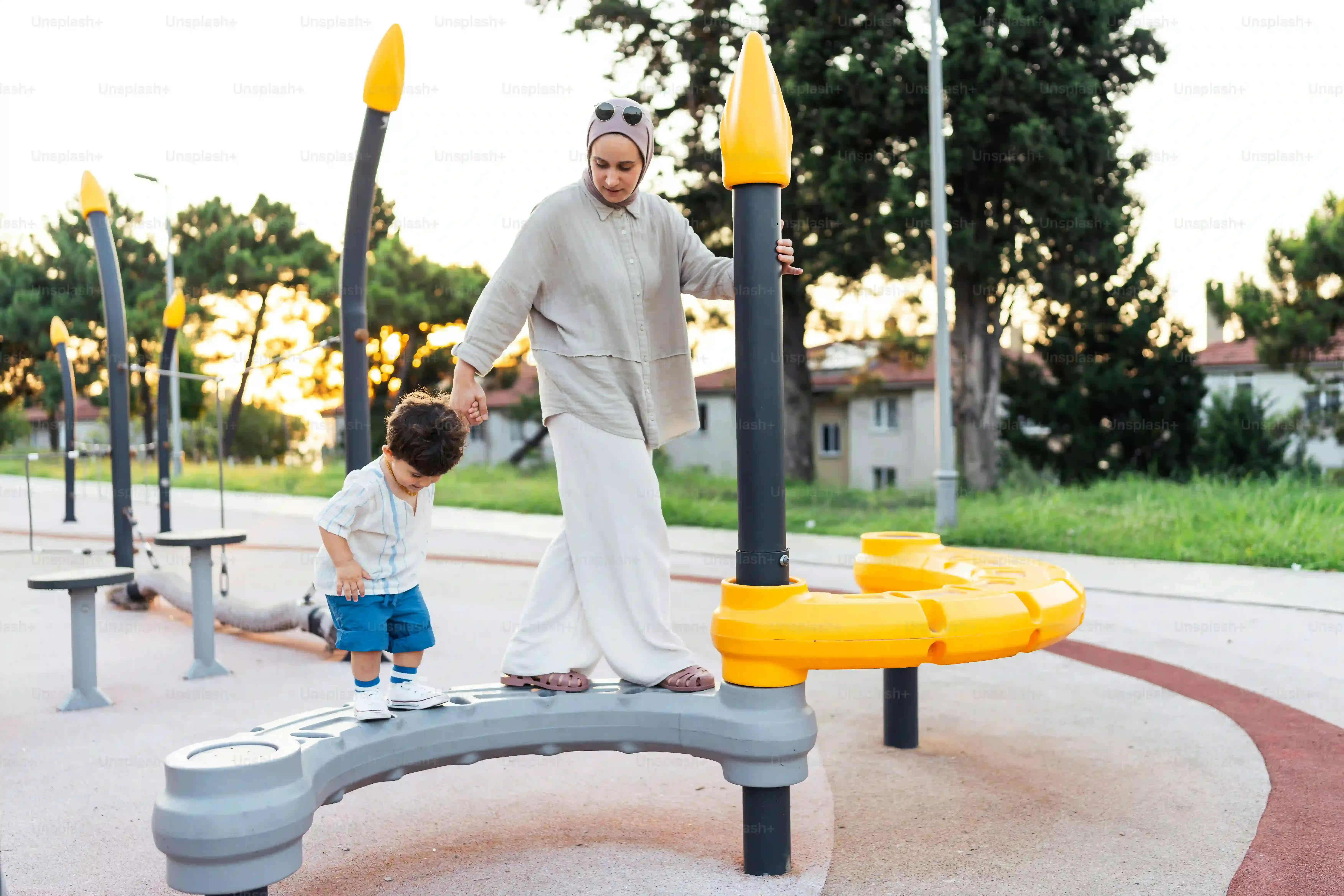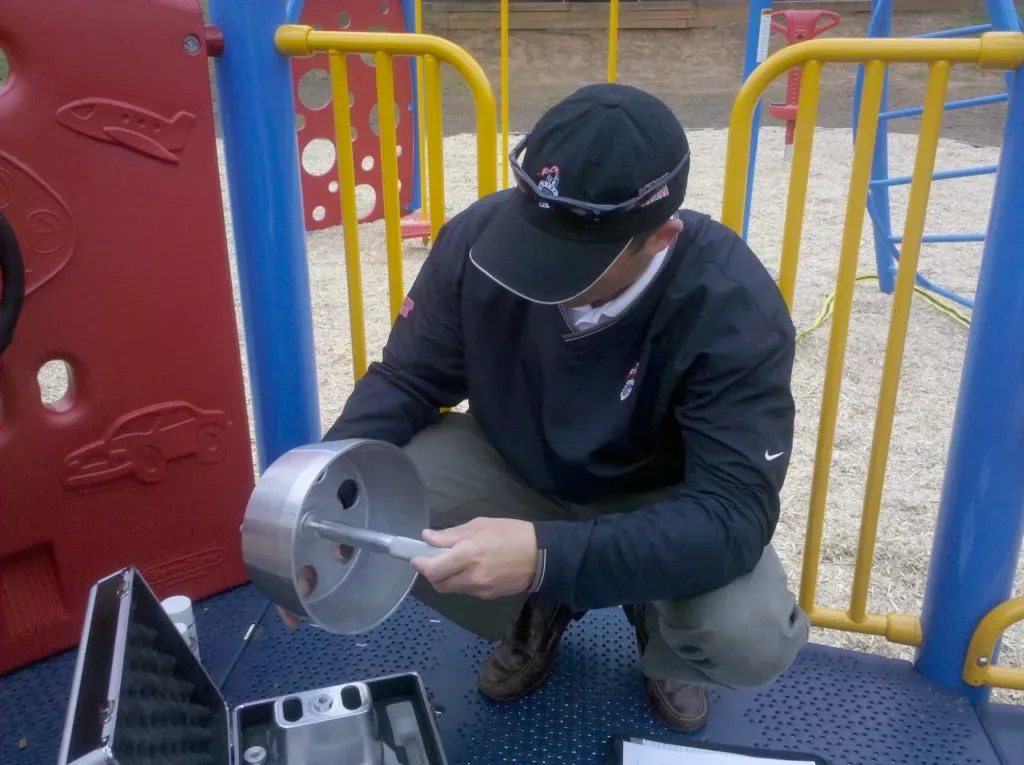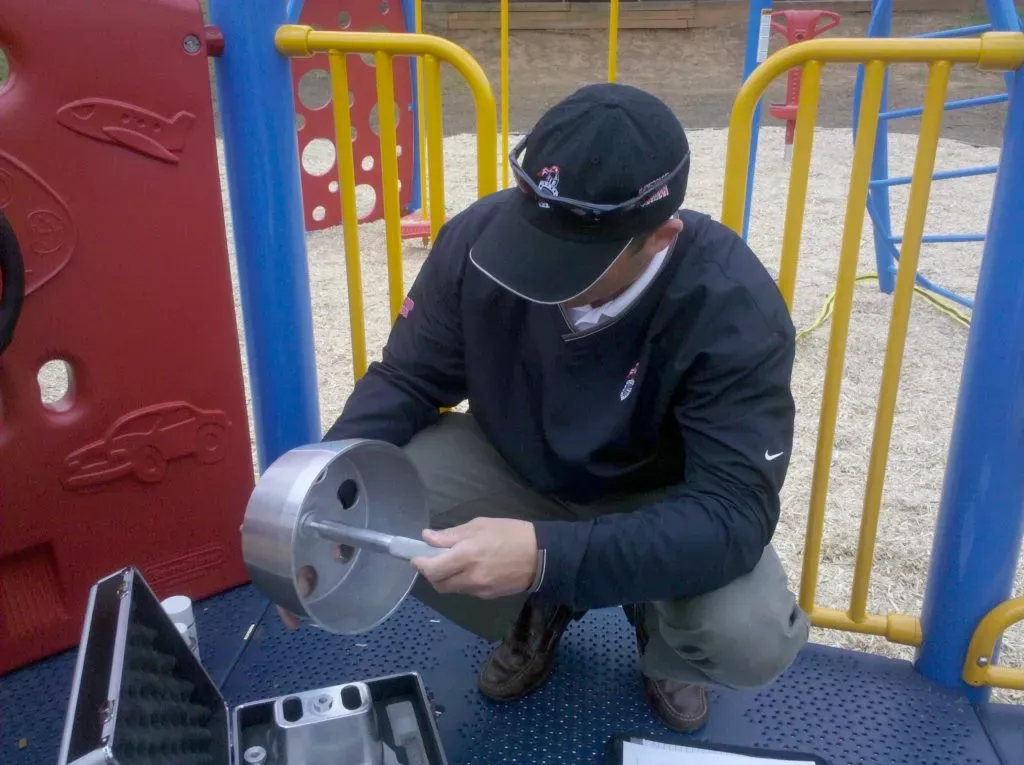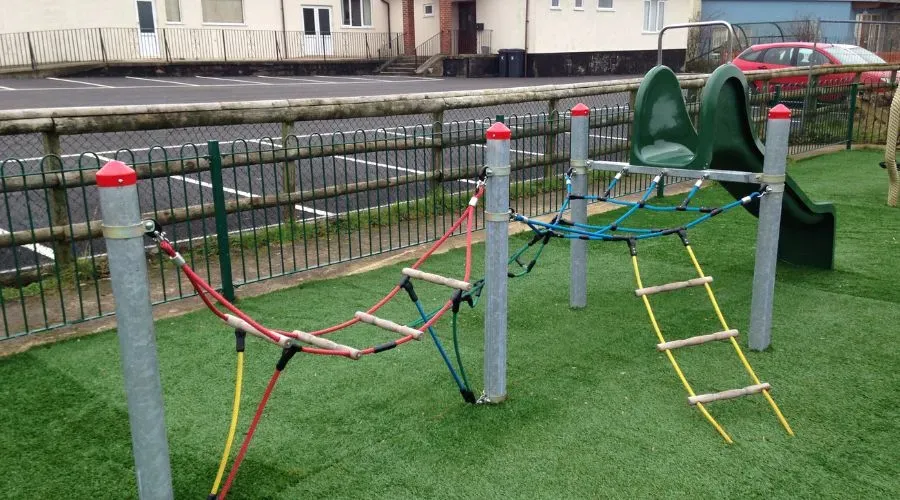Table of Contents
Picture this: a sunny afternoon, kids laughing, swinging high, sliding fast. It’s the scene we all want to see at a playground. But lurking beneath the surface of that fun could be a loose bolt, a cracked surface, or a worn chain – hazards waiting to happen. That’s precisely why you should inspect outdoor playground equipment to keep those smiles genuine and prevent trips to the emergency room. Ignoring regular checks isn't just risky for the kids; it’s a gamble with potential liability and the lifespan of the equipment itself.
Why You Should Inspect Outdoor Playground Equipment

Why You Should Inspect Outdoor Playground Equipment
Let's get straight to it. Why You Should Inspect Outdoor Playground Equipment isn't rocket science; it's about keeping little humans from getting hurt. Nobody wants a call from the school or park telling them a kid face-planted because a bolt came loose or a support post rotted out. Beyond the obvious moral imperative to prevent injuries, there's the cold, hard reality of liability. A playground owner, whether it's a school district, municipality, or even a homeowner's association, is on the hook if someone gets injured due to poorly maintained equipment. Inspections aren't just a nice-to-do; they're a critical risk management strategy. Plus, let's be honest, this stuff isn't cheap. Regular checks catch small problems before they become expensive replacements, protecting your investment and ensuring the playground remains a usable asset, not a derelict hazard zone.
- Preventing serious injuries
- Reducing potential legal liability
- Extending the life of expensive equipment
- Maintaining a positive community space
- Identifying wear and tear early
How Often You Should Inspect Outdoor Playground Equipment

How Often You Should Inspect Outdoor Playground Equipment
Alright, so you're convinced you should inspect outdoor playground equipment to avoid disasters. The next logical question is, " but how often?" There's no single, one-size-fits-all answer stamped on a piece of equipment. Think about it – a small playground behind a quiet church used maybe once a week won't need the same level of scrutiny as a bustling public park packed with kids every single day. The general consensus, often echoed by safety standards like those from the Consumer Product Safety Commission (CPSC), suggests routine visual checks are a must, happening frequently, perhaps daily or weekly depending on usage. More in-depth operational inspections should occur monthly or quarterly, examining moving parts and structural integrity. Then there's the big one, the annual inspection, usually performed by a certified professional, which is a deep dive into everything.
- Routine Visual Checks: Daily or weekly (high usage)
- Operational Inspections: Monthly or quarterly
- Annual Inspections: Once a year (professional recommended)
Factors Influencing How Often You Should Inspect Outdoor Playground Equipment

Factors Influencing How Often You Should Inspect Outdoor Playground Equipment
Weathering the Storm: Environmental Conditions
let's talk about the elements. Sun, rain, snow, extreme temperatures – they all take a toll. A playground baking in the relentless Texas sun or one getting hammered by salty air near the coast will degrade faster than one tucked away in a mild climate. Think about how quickly wood splinters when constantly wet and then dry, or how metal can rust or fatigue under temperature swings. These environmental factors are huge players in deciding how often you should inspect outdoor playground equipment to catch deterioration before it becomes dangerous. Ignoring this is like leaving your car outside during a hurricane and hoping for the best.
Heavy Traffic and Wear and Tear
How many kids are using the equipment? This is perhaps the most obvious factor. A playground at a busy community center sees exponentially more use than a small setup at a private daycare. More feet pounding, more hands gripping, more bodies sliding means faster wear and tear on everything from swings seats and chains to slide surfaces and structural connections. High usage areas demand eagle-eye vigilance. Similarly, the materials themselves matter. Steel is generally more durable than plastic, but even steel can corrode or show fatigue cracks over time, especially at stress points. Knowing the material and its typical lifespan helps gauge inspection needs.
Factor | Impact on Inspection Frequency | Example |
|---|---|---|
High Usage | More Frequent (Daily/Weekly) | Busy public park |
Coastal Environment | More Frequent (Corrosion Risk) | Playground near the ocean |
Extreme Temperatures | More Frequent (Material Fatigue) | Areas with harsh winters or hot summers |
Older Equipment | More Frequent (Increased Wear) | A 15-year-old swing set |
Durable Materials (e.g., Steel) | Potentially Less Frequent Visual Checks (Still needs operational/annual) | Heavy-duty metal climber |
Less Durable Materials (e.g., Wood) | More Frequent Visual Checks (Splintering, Rot) | Wooden play structure |
Safety Standards and Equipment Age
Compliance with current safety standards, like those from CSA or ASTM, isn't just a good idea; it's the baseline for what's considered safe. Older equipment might not have been designed to meet today's requirements, meaning it inherently carries more risk and might need closer monitoring. Think about guardrail heights or spacing between components. Even equipment that met standards when installed ages. Bolts loosen, welds crack, plastic fades and becomes brittle. An old piece of equipment, regardless of how well-loved, simply requires more frequent checks to ensure it hasn't become a hazard waiting for a kid to find it. Age isn't just a number when it comes to playground equipment; it's a ticking clock for potential failure points.
Types of Inspections: Routine vs. Professional

Types of Inspections: Routine vs. Professional
Quick Checks: The Routine Visual Inspection
so we've established you should inspect outdoor playground equipment to keep things safe. The first, and most frequent, type of check is the routine visual inspection. Think of this as your daily or weekly walk-through. It's not about getting out the toolkit; it's about looking for the obvious stuff. Are there any broken swings? Is there trash or glass on the ground? Are bolts obviously missing? Is the surfacing material displaced, creating hard spots? Anyone responsible for the playground area can do this – park staff, teachers, even vigilant volunteers. It's about catching immediate hazards that pop up from everyday use or vandalism.
Getting Deeper: Operational Inspections
Stepping up from the quick visual check, you have operational inspections. These happen less often, maybe monthly or quarterly, and they require a bit more attention to detail. This is where you start looking at the moving parts. Are swing hangers worn? Do bolts need tightening? Are there any signs of cracking or structural fatigue on slides or climbers? You're checking the functionality and wear of specific components. It might involve a simple tool kit to tighten fasteners or check for proper clearances. This level of inspection requires someone with a basic understanding of playground equipment and what to look for beyond surface-level issues.
So, what's the difference between these two levels of basic checks?
- Routine: Quick scan, looking for immediate hazards, done frequently (daily/weekly).
- Operational: More detailed look at components and wear, done less frequently (monthly/quarterly).
- Who does them: Usually site staff or trained personnel.
Bringing in the Experts: Annual Professional Inspections
Finally, there's the annual, or periodic, inspection. This is the deep dive, and frankly, it's best left to the professionals. These are certified playground safety inspectors (CPSI) who know the standards inside and out – the CSA, ASTM, CPSC guidelines we talked about. They use specialized tools, check critical measurements like fall heights and entrapment points, and assess the overall condition and compliance of the entire playground structure and its surfacing. They can spot issues you'd never notice, like subtle signs of metal fatigue inside a support post or whether the impact attenuation of the surfacing is still adequate. While you should inspect outdoor playground equipment to handle the day-to-day and month-to-month, the annual pro check is your safety net, ensuring everything meets the current code and isn't hiding any nasty surprises.
Common Questions About Inspecting Outdoor Playground Equipment (FAQs)

Common Questions About Inspecting Outdoor Playground Equipment (FAQs)
Can I Just Do the Inspections Myself?
Look, if you're running a small setup, maybe a backyard swing set or a small church playground, you absolutely can and should handle the routine visual and even some operational checks yourself. It’s about being observant and knowing what looks "off." Are bolts backing out? Is there splintered wood? Are surfaces worn down? You don't need a degree to spot a trip hazard or a broken piece. However, remember that professional annual inspection we talked about? That's where the DIY approach usually falls short. Certified inspectors have specific training, know the intricate standards, and use tools to measure things like fall zones and entrapment points you probably don't have or know how to use correctly. So, handle the frequent checks, but budget for the annual pro visit. It’s cheap insurance.
What Are the Most Common Hazards I Should Look For?
When you're doing those regular checks, your eyes should be scanning for a few usual suspects. These are the things that pop up most often due to wear, weather, or just plain old neglect. Think about the ground first – that safety surfacing is critical. Is it spread thin under swings? Are there hard spots? Then look at the equipment itself. Loose bolts and fasteners are notorious. Check for sharp edges or points, especially on metal or plastic that's cracked. Are chains on swings or other moving parts excessively worn or rusted? Splintered wood, cracks in plastic, or signs of structural instability like leaning posts are also red flags. Basically, anything that's broken, loose, sharp, or just looks like it's about to fail needs attention.
Common Playground Hazards to Spot:
- Displaced or inadequate safety surfacing
- Loose or missing bolts and fasteners
- Sharp edges, points, or broken parts
- Excessively worn or rusted chains and moving parts
- Splintered or rotting wood
- Cracks in plastic components
- Signs of structural instability (leaning, bending)
- Entrapment points (gaps where a head or limb could get stuck)
What Should I Do If I Find a Problem?
Finding a hazard during an inspection isn't the end of the world, but ignoring it might be. The absolute first step is to make the area safe immediately. This might mean cordoning off the piece of equipment, putting up caution tape, or even closing the entire playground if the hazard is significant (like unsafe surfacing or a major structural issue). Don't wait. Once the area is secured, you need to document the issue – take photos, write down what you found and where, and note the date. Then, figure out the fix. Can you tighten the bolt yourself? Do you need to call a maintenance crew? Or is it a major repair or replacement that requires professional help? Address the problem promptly and keep records of the repair. Letting a known hazard linger after you've found it is just asking for trouble.
Making Playgrounds Safer, One Check at a Time
Ensuring the safety of outdoor playground equipment isn't just a suggestion; it's a fundamental responsibility. Regular, thorough inspections, adjusted for factors like usage and weather, are the practical steps that prevent minor issues from escalating into serious hazards. Whether it's a quick visual sweep or a detailed professional assessment, staying on top of maintenance protects not only the children who use the equipment but also the individuals or organizations responsible for its upkeep. It’s less about eliminating all risk and more about managing foreseeable dangers with diligence and consistency.